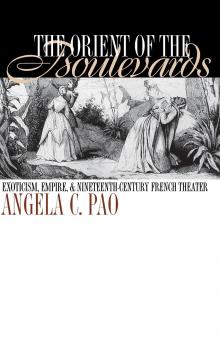New Cultural Studies
Скачать книги из серии New Cultural StudiesMaterial London, ca. 1600
Between 1500 and 1700, London grew from a minor national capital to the largest city in Europe. The defining period of growth was the period from 1550 to 1650, the midpoint of which coincided with the end of Elizabeth I's reign and the height of Shakespeare's theatrical career. In Material London, ca. 1600 , Lena Cowen Orlin and a distinguished group of social, intellectual, urban, architectural, and agrarian historians, archaeologists, cultural anthropologists, and literary critics explore the ideas, structures, and practices that distinguished London before the Great Fire, basing their investigations on the material traces in artifacts, playtexts, documents, graphic arts, and archaeological remains. In order to evoke «material London, ca. 1600,» each scholar examines a different aspect of one of the great world cities at a critical moment in Western history. Several chapters give broad panoramic and authoritative views: what architectural forms characterized the built city around 1600; how the public theatre established its claim on the city; how London's citizens incorporated the new commercialism of their culture into their moral views. Other essays offer sharply focused studies: how Irish mantles were adopted as elite fashions in the hybrid culture of the court; how the city authorities clashed with the church hierarchy over the building of a small bookshop; how London figured in Ben Jonson's exploration of the role of the poet. Although all the authors situate the material world of early modern London—its objects, products, literatures, built environment, and economic practices—in its broader political and cultural contexts, provocative debates and exchanges remain both within and between the essays as to what constitutes «material London, ca. 1600.»
The Complexion of Race
In the 1723 Journal of a Voyage up the Gambia , an English narrator describes the native translators vital to the expedition's success as being «Black as Coal.» Such a description of dark skin color was not unusual for eighteenth-century Britons—but neither was the statement that followed: «here, thro' Custom, (being Christians) they account themselves White Men.» The Complexion of Race asks how such categories would have been possible, when and how such statements came to seem illogical, and how our understanding of the eighteenth century has been distorted by the imposition of nineteenth and twentieth century notions of race on an earlier period. Wheeler traces the emergence of skin color as a predominant marker of identity in British thought and juxtaposes the Enlightenment's scientific speculation on the biology of race with accounts in travel literature, fiction, and other documents that remain grounded in different models of human variety. As a consequence of a burgeoning empire in the second half of the eighteenth century, English writers were increasingly preoccupied with differentiating the British nation from its imperial outposts by naming traits that set off the rulers from the ruled; although race was one of these traits, it was by no means the distinguishing one. In the fiction of the time, non-European characters could still be «redeemed» by baptism or conversion and the British nation could embrace its mixed-race progeny. In Wheeler's eighteenth century we see the coexistence of two systems of racialization and to detect a moment when an older order, based on the division between Christian and heathen, gives way to a new one based on the assertion of difference between black and white.









